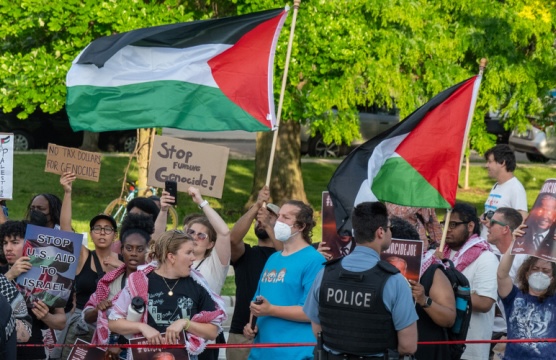It appears that the US may have found a ceasefire formula for Gaza; or it may not have.
Hamas, it appears, has already announced that it is not dropping one of its demands, as earlier news reports claimed.
According to NBC News, “Hamas has expressed concern Israel will restart the war after the hostages are released. Israeli officials have said they are worried Hamas will draw out the talks and the initial cease-fire indefinitely, without releasing all the hostages.”
The journalistic equivalence between the concerns of a terror organization and those of a democratic ally of the West is not surprising. That the United States sees an equivalence is not surprising either — but it is disgusting.
Regardless of how this negotiation goes, three points carry forward: First, a ceasefire only works until someone starts firing again. There was, in fact, a Hamas-accepted ceasefire in place on October 6, 2023 — which Hamas violated on October 7, with the largest mass murder of Jews since the Holocaust.
Second, if the ceasefire does not include Hezbollah in the north, it is not a ceasefire — it is simply a shift in the battlefield. The 2006 Lebanon War ended in a ceasefire with UN Resolution 1701 designed to keep things quiet. Until it didn’t.
And third, given the rapes, mutilation, burning alive, and shooting of children in front of their parents that occurred on October 7, the US should probably not have engaged Hamas as if it was civilized and partner in negotiations, but rather helped Israel manage a swift incursion to meet the three perfectly reasonable Israeli goals for the war: securing the borders and the people of Israel; taking away Hamas’ military and governing power; and releasing the hostages.
Israel is built for short wars. The Six-Day War, the Yom Kippur War, the Second Lebanon War, and a series of Gaza rocket wars ended in (sometimes temporary) ceasefires that were in part the result of Israel’s size, reserve structure, and the limits of the world’s patience. In this case, it is US patience.
The early part of the 2023-24 Gaza war appeared successful by those standards. Hamas was routed from the north, and agreed to return 115 hostages in a limited ceasefire/swap. Israel destroyed tunnels under mosques, UNRWA schools, and hospitals, while evacuating tens of thousands of Gaza civilians who had been held as human sacrifices above the tunnels.
But the US had a different idea. After the early phase, as Israel delayed its entry into Rafah, the US — opposed to an Israeli military victory — began to stretch the war, demanding almost impossible Israeli measures to aid civilians and limit the battles.
“Israel is being measured by double and triple standards … that do not exist anywhere in the world,” said John Spencer, head of Urban Warfare Studies at West Point.
Refuting claims of civilian starvation and rejecting Hamas’ casualty figures as propaganda, Spencer compared Israel’s operations to Coalition operations in Iraq: “When ISIS ruled Iraq, it held the territory for about two years and built up its defenses. In the battles against the terrorist organization, the number of dead ranged from 10,000 to 40,000 people, and the numbers were reported only after a year.” Hamas has been building up its defenses for 18 years, and yet Israel is still protecting civilians in ways that White House spokesperson John Kirby said even the US may not have.
Retired British Army Major Andrew Fox agreed. “Critics are looking at IDF tactics through the lens of Western counterinsurgency (COIN), the doctrine … applied in the failed campaigns in Afghanistan and Iraq … Western tactics were to seize a chunk of territory and clear it of enemies through military force. The plan was then to hold the territory through forward operating bases (FOBs) and try to conduct alternative governance in those areas while providing security. The system of FOBs meant that our enemies, embedded in the local civilian population, always knew where we were and what routes we were likely to use. They could mortar, rocket, and IED us at will.”
And did. Until we left.
The US was not looking for “victory” in Iraq or Afghanistan, and it didn’t get one. The troops came home because they could; thousands of miles separated America from its enemies. There appears to be no recognition by the US government that Israel cannot “go home.” Israel is home.
Secretary of State Antony Blinken made it clear as early as mid-May that “victory” was not going to be in the cards for Israel.
While Israel may have some military success in Rafah, he said, it will be one that “is not durable, one that’s not sustainable. And they will be left holding the bag on an enduring insurgency because a lot of armed Hamas will be left no matter what they do in Rafah … We want to make sure it’s demilitarized.”
Like Iraq. Like Afghanistan.
Israel is paying a price for acceding to American demands for the deployment of its forces and the scope of the battle. Hamas has little reason to negotiate. But even so, in Fox’s view, “The operational end state looks like significant Hamas infrastructure is destroyed, its fighting capability severely degraded, and the border secured, with the IDF retaining the capability to strike into Gaza at will.”
The original Israeli goals.
The US would do well to help Israel cement them and force Hamas to return the hostages.


